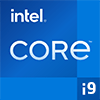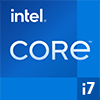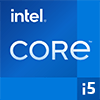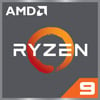
Apple M1 vs AMD Ryzen 9 5950X
Last updated:
CPU comparison with benchmarks
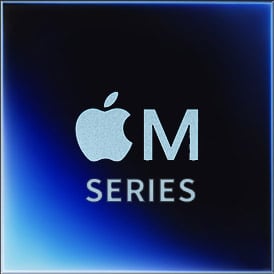
|
 |
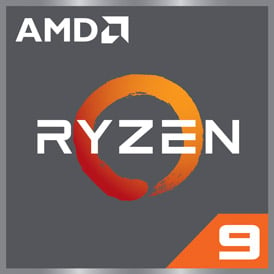
|
| Apple M1 | AMD Ryzen 9 5950X | |
CPU comparisonIn this CPU comparison, we compare the Apple M1 and the AMD Ryzen 9 5950X and use benchmarks to check which processor is faster.
We compare the Apple M1 8 core processor released in Q4/2020 with the AMD Ryzen 9 5950X which has 16 CPU cores and was introduced in Q4/2020. |
||
| Apple M series (23) | Family | AMD Ryzen 9 (35) |
| Apple M1 (9) | CPU group | AMD Ryzen 5000 (12) |
| 1 | Generation | 4 |
| M1 | Architecture | Vermeer (Zen 3) |
| Mobile | Segment | Desktop / Server |
| -- | Predecessor | AMD Ryzen 9 3950X |
| Apple M2 | Successor | AMD Ryzen 9 7950X |
|
|
||
CPU Cores and Base FrequencyThe Apple M1 is a 8 core processor with a clock frequency of 0.60 GHz (3.20 GHz). The processor can compute 8 threads at the same time. The AMD Ryzen 9 5950X clocks with 3.40 GHz (4.90 GHz), has 16 CPU cores and can calculate 32 threads in parallel. |
||
| Apple M1 | Characteristic | AMD Ryzen 9 5950X |
| 8 | Cores | 16 |
| 8 | Threads | 32 |
| hybrid (big.LITTLE) | Core architecture | normal |
| No | Hyperthreading | Yes |
| No | Overclocking ? | Yes |
| 0.60 GHz (3.20 GHz) 4x Firestorm |
A-Core | 3.40 GHz (4.90 GHz) |
| 0.60 GHz (2.06 GHz) 4x Icestorm |
B-Core | -- |
Artificial Intelligence and Machine LearningProcessors with the support of artificial intelligence (AI) and machine learning (ML) can process many calculations, especially audio, image and video processing, much faster than classic processors. Algorithms for ML improve their performance the more data they have collected via software. ML tasks can be processed up to 10,000 times faster than with a classic processor. |
||
| Apple M1 | Characteristic | AMD Ryzen 9 5950X |
| Apple Neural Engine | AI hardware | -- |
| 16 Neural cores @ 11 TOPS | AI specifications | -- |
Internal GraphicsGraphics (iGPU) integrated into the processor not only enable image output without having to rely on a dedicated graphics solution, but can also efficiently accelerate video playback. |
||
| Apple M1 (8 Core) | GPU | no iGPU |
| 0.39 GHz | GPU frequency | -- |
| 1.30 GHz | GPU (Turbo) | -- |
| 1 | GPU Generation | -- |
| 5 nm | Technology | |
| 2 | Max. displays | |
| 128 | Compute units | -- |
| 1024 | Shader | -- |
| No | Hardware Raytracing | No |
| No | Frame Generation | No |
| 8 GB | Max. GPU Memory | -- |
| -- | DirectX Version | -- |
Hardware codec supportA photo or video codec that is accelerated in hardware can greatly accelerate the working speed of a processor and extend the battery life of notebooks or smartphones when playing videos. |
||
| Apple M1 (8 Core) | GPU | no iGPU |
| Decode / Encode | Codec h265 / HEVC (8 bit) | No |
| Decode / Encode | Codec h265 / HEVC (10 bit) | No |
| Decode / Encode | Codec h264 | No |
| Decode / Encode | Codec VP9 | No |
| Decode | Codec VP8 | No |
| No | Codec AV1 | No |
| Decode | Codec AVC | No |
| Decode | Codec VC-1 | No |
| Decode / Encode | Codec JPEG | No |
Memory & PCIeUp to 16 GB of memory in a maximum of 2 memory channels is supported by the Apple M1, while the AMD Ryzen 9 5950X supports a maximum of 128 GB of memory with a maximum memory bandwidth of 51.2 GB/s enabled. |
||
| Apple M1 | Characteristic | AMD Ryzen 9 5950X |
| LPDDR4X-4266 | Memory | DDR4-3200 |
| 16 GB | Max. Memory | 128 GB |
| 2 (Dual Channel) | Memory channels | 2 (Dual Channel) |
| 68.2 GB/s | Max. Bandwidth | 51.2 GB/s |
| No | ECC | Yes |
| 16.00 MB | L2 Cache | 8.00 MB |
| -- | L3 Cache | 64.00 MB |
| 4.0 | PCIe version | 4.0 |
| -- | PCIe lanes | 20 |
| -- | PCIe Bandwidth | 39.4 GB/s |
Thermal ManagementThe Apple M1 has a TDP of 18 W. The TDP of the AMD Ryzen 9 5950X is 105 W. System integrators use the TDP of the processor as a guide when dimensioning the cooling solution. |
||
| Apple M1 | Characteristic | AMD Ryzen 9 5950X |
| 18 W | TDP (PL1 / PBP) | 105 W |
| -- | TDP (PL2) | 142 W |
| 20 W | TDP up | -- |
| 10 W | TDP down | -- |
| -- | Tjunction max. | 95 °C |
Technical detailsThe Apple M1 has 16.00 MB cache and is manufactured in 5 nm. The cache of AMD Ryzen 9 5950X is at 72.00 MB. The processor is manufactured in 7 nm. |
||
| Apple M1 | Characteristic | AMD Ryzen 9 5950X |
| 5 nm | Technology | 7 nm |
| Chiplet | Chip design | Chiplet |
| Armv8.5-A (64 bit) | Instruction set (ISA) | x86-64 (64 bit) |
| Rosetta 2 x86-Emulation | ISA extensions | SSE4a, SSE4.1, SSE4.2, AVX2, FMA3 |
| -- | Socket | AM4 (PGA 1331) |
| Apple Virtualization Framework | Virtualization | AMD-V, SVM |
| Yes | AES-NI | Yes |
| macOS | Operating systems | Windows 10, Windows 11, Linux |
| Q4/2020 | Release date | Q4/2020 |
| -- | Release price | 799 $ |
| show more data | show more data | |
Rate these processors
Average performance in benchmarks
⌀ Single core performance in 4 CPU benchmarks
⌀ Multi core performance in 6 CPU benchmarks
Cinebench 2024 (Single-Core)
The Cinebench 2024 benchmark is based on the Redshift rendering engine, which is also used in Maxon's 3D program Cinema 4D. The benchmark runs are each 10 minutes long to test whether the processor is limited by its heat generation.
|
|
Apple M1
8C 8T @ 3.20 GHz |
||
|
|
AMD Ryzen 9 5950X
16C 32T @ 4.90 GHz |
||
Cinebench 2024 (Multi-Core)
The Multi-Core test of the Cinebench 2024 benchmark uses all cpu cores to render using the Redshift rendering engine, which is also used in Maxons Cinema 4D. The benchmark run is 10 minutes long to test whether the processor is limited by its heat generation.
|
|
Apple M1
8C 8T @ 3.20 GHz |
||
|
|
AMD Ryzen 9 5950X
16C 32T @ 4.90 GHz |
||
Cinebench R23 (Single-Core)
Cinebench R23 is the successor of Cinebench R20 and is also based on the Cinema 4 Suite. Cinema 4 is a worldwide used software to create 3D forms. The single-core test only uses one CPU core, the amount of cores or hyperthreading ability doesn't count.
|
|
Apple M1
8C 8T @ 3.20 GHz |
||
|
|
AMD Ryzen 9 5950X
16C 32T @ 4.90 GHz |
||
Cinebench R23 (Multi-Core)
Cinebench R23 is the successor of Cinebench R20 and is also based on the Cinema 4 Suite. Cinema 4 is a worldwide used software to create 3D forms. The multi-core test involves all CPU cores and taks a big advantage of hyperthreading.
|
|
Apple M1
8C 8T @ 3.20 GHz |
||
|
|
AMD Ryzen 9 5950X
16C 32T @ 4.20 GHz |
||
Geekbench 5, 64bit (Single-Core)
Geekbench 5 is a cross plattform benchmark that heavily uses the systems memory. A fast memory will push the result a lot. The single-core test only uses one CPU core, the amount of cores or hyperthreading ability doesn't count.
|
|
Apple M1
8C 8T @ 3.20 GHz |
||
|
|
AMD Ryzen 9 5950X
16C 32T @ 4.90 GHz |
||
Geekbench 5, 64bit (Multi-Core)
Geekbench 5 is a cross plattform benchmark that heavily uses the systems memory. A fast memory will push the result a lot. The multi-core test involves all CPU cores and taks a big advantage of hyperthreading.
|
|
Apple M1
8C 8T @ 3.20 GHz |
||
|
|
AMD Ryzen 9 5950X
16C 32T @ 4.20 GHz |
||
Geekbench 6 (Single-Core)
Geekbench 6 is a benchmark for modern computers, notebooks and smartphones. What is new is an optimized utilization of newer CPU architectures, e.g. based on the big.LITTLE concept and combining CPU cores of different sizes. The single-core benchmark only evaluates the performance of the fastest CPU core, the number of CPU cores in a processor is irrelevant here.
|
|
Apple M1
8C 8T @ 3.20 GHz |
||
|
|
AMD Ryzen 9 5950X
16C 32T @ 4.90 GHz |
||
Geekbench 6 (Multi-Core)
Geekbench 6 is a benchmark for modern computers, notebooks and smartphones. What is new is an optimized utilization of newer CPU architectures, e.g. based on the big.LITTLE concept and combining CPU cores of different sizes. The multi-core benchmark evaluates the performance of all of the processor's CPU cores. Virtual thread improvements such as AMD SMT or Intel's Hyper-Threading have a positive impact on the benchmark result.
|
|
Apple M1
8C 8T @ 3.20 GHz |
||
|
|
AMD Ryzen 9 5950X
16C 32T @ 4.20 GHz |
||
Blender 3.1 Benchmark
In the Blender Benchmark 3.1, the scenes "monster", "junkshop" and "classroom" are rendered and the time required by the system is measured. In our benchmark we test the CPU and not the graphics card. Blender 3.1 was presented as a standalone version in March 2022.
|
|
Apple M1
8C 8T @ 3.20 GHz |
||
|
|
AMD Ryzen 9 5950X
16C 32T @ 4.20 GHz |
||
Estimated results for PassMark CPU Mark
Some of the CPUs listed below have been benchmarked by CPU-monkey. However the majority of CPUs have not been tested and the results have been estimated by a CPU-monkey’s secret proprietary formula. As such they do not accurately reflect the actual Passmark CPU mark values and are not endorsed by PassMark Software Pty Ltd.
|
|
Apple M1
8C 8T @ 3.20 GHz |
||
|
|
AMD Ryzen 9 5950X
16C 32T @ 4.20 GHz |
||
CPU performance per watt (efficiency)
Efficiency of the processor under full load in the Cinebench R23 (multi-core) benchmark. The benchmark result is divided by the average energy required (CPU package power in watts). The higher the value, the more efficient the CPU is under full load.
|
|
Apple M1
7,759 CB R23 MC @ 18 W |
||
|
|
AMD Ryzen 9 5950X
28,577 CB R23 MC @ 153 W |
||
Cinebench R20 (Single-Core)
Cinebench R20 is the successor of Cinebench R15 and is also based on the Cinema 4 Suite. Cinema 4 is a worldwide used software to create 3D forms. The single-core test only uses one CPU core, the amount of cores or hyperthreading ability doesn't count.
|
|
Apple M1
8C 8T @ 3.20 GHz |
||
|
|
AMD Ryzen 9 5950X
16C 32T @ 4.90 GHz |
||
Cinebench R20 (Multi-Core)
Cinebench R20 is the successor of Cinebench R15 and is also based on the Cinema 4 Suite. Cinema 4 is a worldwide used software to create 3D forms. The multi-core test involves all CPU cores and taks a big advantage of hyperthreading.
|
|
Apple M1
8C 8T @ 3.20 GHz |
||
|
|
AMD Ryzen 9 5950X
16C 32T @ 4.20 GHz |
||
iGPU - FP32 Performance (Single-precision GFLOPS)
The theoretical computing performance of the internal graphics unit of the processor with simple accuracy (32 bit) in GFLOPS. GFLOPS indicates how many billion floating point operations the iGPU can perform per second.
|
|
Apple M1
Apple M1 (8 Core) @ 1.30 GHz |
||
|
|
AMD Ryzen 9 5950X
@ 0.00 GHz |
||
Blender 2.81 (bmw27)
Blender is a free 3D graphics software for rendering (creating) 3D bodies, which can also be textured and animated in the software. The Blender benchmark creates predefined scenes and measures the time (s) required for the entire scene. The shorter the time required, the better. We selected bmw27 as the benchmark scene.
|
|
Apple M1
8C 8T @ 3.20 GHz |
||
|
|
AMD Ryzen 9 5950X
16C 32T @ 4.20 GHz |
||
CPU-Z Benchmark 17 (Single-Core)
The CPU-Z benchmark measures a processor's performance by measuring the time it takes the system to complete all benchmark calculations. The faster the benchmark is completed, the higher the score.
|
|
Apple M1
8C 8T @ 3.20 GHz |
||
|
|
AMD Ryzen 9 5950X
16C 32T @ 4.20 GHz |
||
CPU-Z Benchmark 17 (Multi-Core)
The CPU-Z benchmark measures a processor's performance by measuring the time it takes the system to complete all benchmark calculations. The faster the benchmark is completed, the higher the score.
|
|
Apple M1
8C 8T @ 0.60 GHz |
||
|
|
AMD Ryzen 9 5950X
16C 32T @ 3.40 GHz |
||
Cinebench R15 (Single-Core)
Cinebench R15 is the successor of Cinebench 11.5 and is also based on the Cinema 4 Suite. Cinema 4 is a worldwide used software to create 3D forms. The single-core test only uses one CPU core, the amount of cores or hyperthreading ability doesn't count.
|
|
Apple M1
8C 8T @ 3.20 GHz |
||
|
|
AMD Ryzen 9 5950X
16C 32T @ 4.90 GHz |
||
Cinebench R15 (Multi-Core)
Cinebench R15 is the successor of Cinebench 11.5 and is also based on the Cinema 4 Suite. Cinema 4 is a worldwide used software to create 3D forms. The multi-core test involves all CPU cores and taks a big advantage of hyperthreading.
|
|
Apple M1
8C 8T @ 3.20 GHz |
||
|
|
AMD Ryzen 9 5950X
16C 32T @ 4.20 GHz |
||
Performance for Artificial Intelligence (AI) and Machine Learning (ML)
Processors with the support of artificial intelligence (AI) and machine learning (ML) can process many calculations, especially audio, image and video processing, much faster than classic processors. The performance is given in the number (trillions) of arithmetic operations per second (TOPS).
|
|
Apple M1
8C 8T @ 0.60 GHz |
||
|
|
AMD Ryzen 9 5950X
16C 32T @ 3.40 GHz |
||
Devices using this processor |
|
| Apple M1 | AMD Ryzen 9 5950X |
| Apple iMac 24 (2021) Apple MacBook Pro 13 (L2020) Apple MacBook Air (2020) Apple Mac mini (2020) Apple iPad Pro 11 (2021) Apple iPad Pro 12.9 (2021) Apple iPad Air (2022) |
Unknown |
News and articles for the Apple M1 and the AMD Ryzen 9 5950X
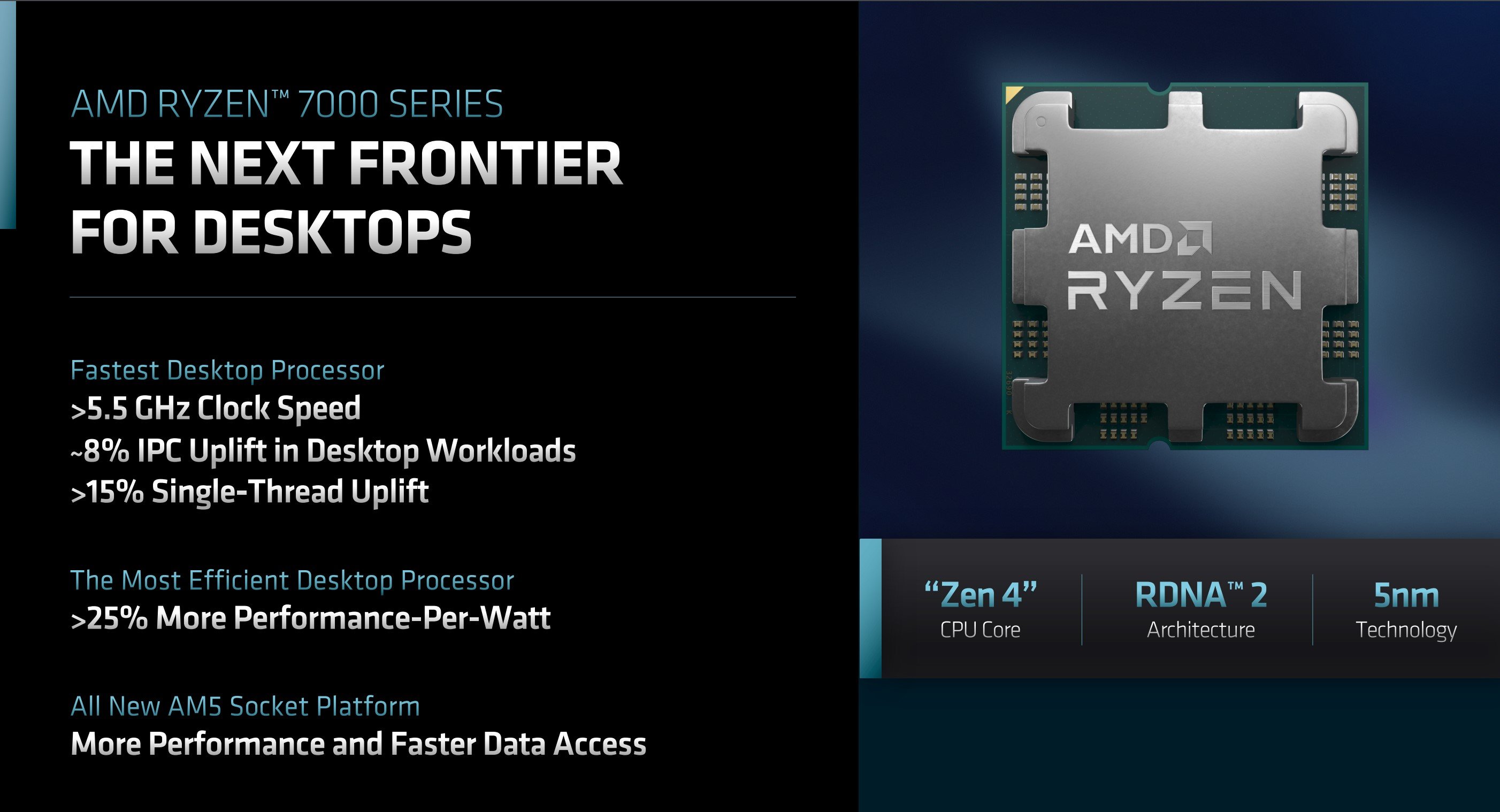
Why the new AMD Ryzen 7000 processors for the AM5 socket are currently not a good deal
Posted by Stefan on 2022-10-11
At the end of September 2022, the time had come: AMD presented its latest desktop processors called AMD Ryzen 7000. Initially, 4 processors with 6 to 16 CPU cores were released.
The new socket AM5 (LGA 1718) is used for the first time, which is intended to replace the very durable socket AM4 introduced in 2017 as AMDs mainstream platform. This includes (depending on the chipset) PCIe 5.0 support as well as the exclusive use of DDR5 memory on all AM5 mainboards.
Officially, DDR5-5200 is the maximum, but with AMDs EXPO Technology which is similar to Intel's XMP 3.0, AMD now also has a solution for easy overclocking of the main memory. AMD itself names DDR5-6000 as the sweet spot for the new AMD Ryzen 7000 processors.
The new socket AM5 (LGA 1718) is used for the first time, which is intended to replace the very durable socket AM4 introduced in 2017 as AMDs mainstream platform. This includes (depending on the chipset) PCIe 5.0 support as well as the exclusive use of DDR5 memory on all AM5 mainboards.
Officially, DDR5-5200 is the maximum, but with AMDs EXPO Technology which is similar to Intel's XMP 3.0, AMD now also has a solution for easy overclocking of the main memory. AMD itself names DDR5-6000 as the sweet spot for the new AMD Ryzen 7000 processors.
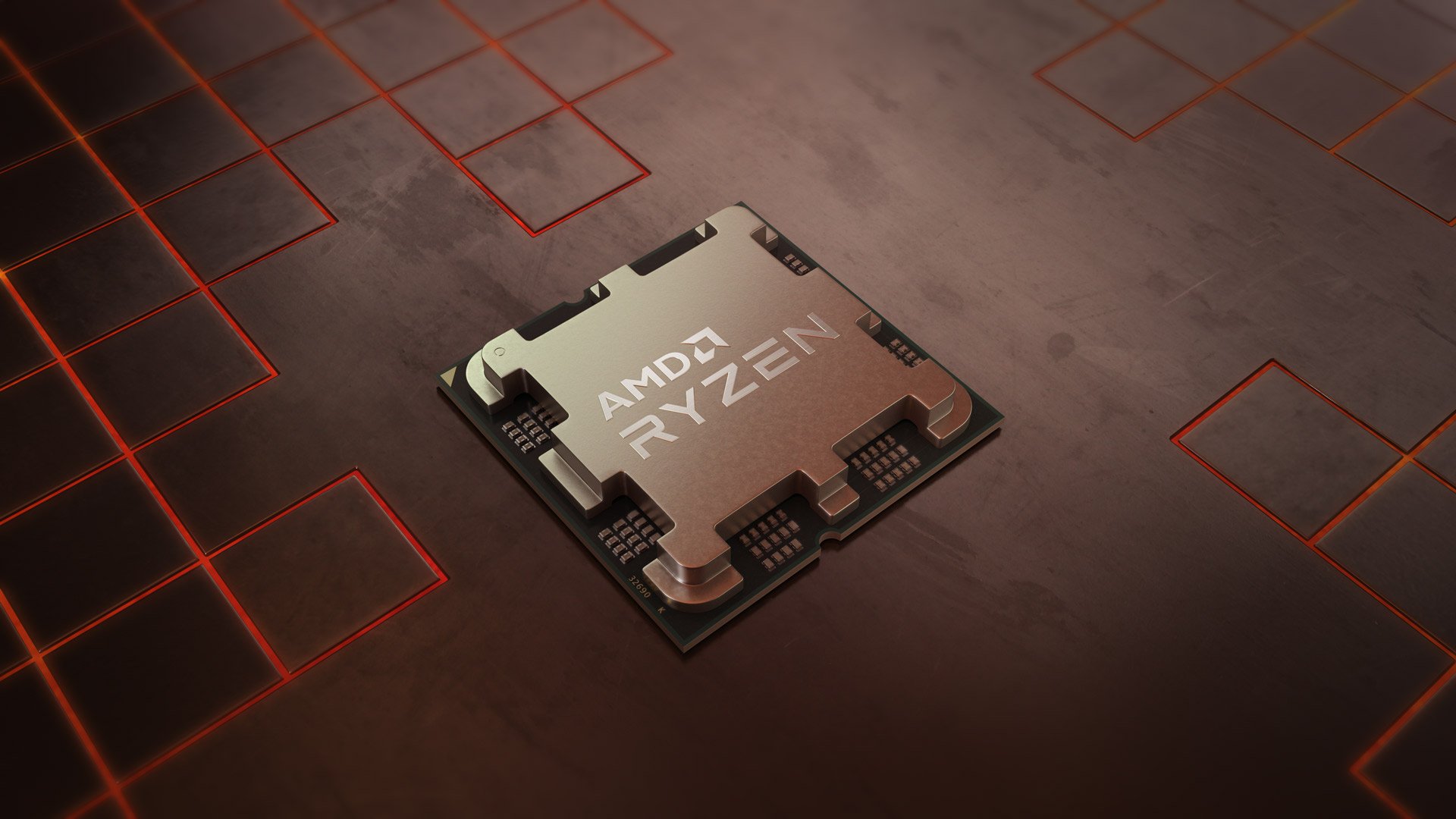
The evolution of AMD Ryzen processors
Posted by Stefan on 2022-09-06
The AMD Ryzen processors are designed for the mid to high-end range and are grouped into the Ryzen 3, Ryzen 5, Ryzen 7 and Ryzen 9 classes. AMD follows the market leader Intel, which groups its Core i series (Intel Core i3, Core i5, Core i7 and Core i9) identically.
The AMD Ryzen processors were first introduced by AMD in Q1 2017. They are the successor to the not particularly successful AMD Bulldozer processors. The latter were manufactured using an outdated manufacturing process and could not keep up with the competing products from Intel. AMD lost a large portion of its desktop processor market share during this period.
The AMD Ryzen processors were first introduced by AMD in Q1 2017. They are the successor to the not particularly successful AMD Bulldozer processors. The latter were manufactured using an outdated manufacturing process and could not keep up with the competing products from Intel. AMD lost a large portion of its desktop processor market share during this period.
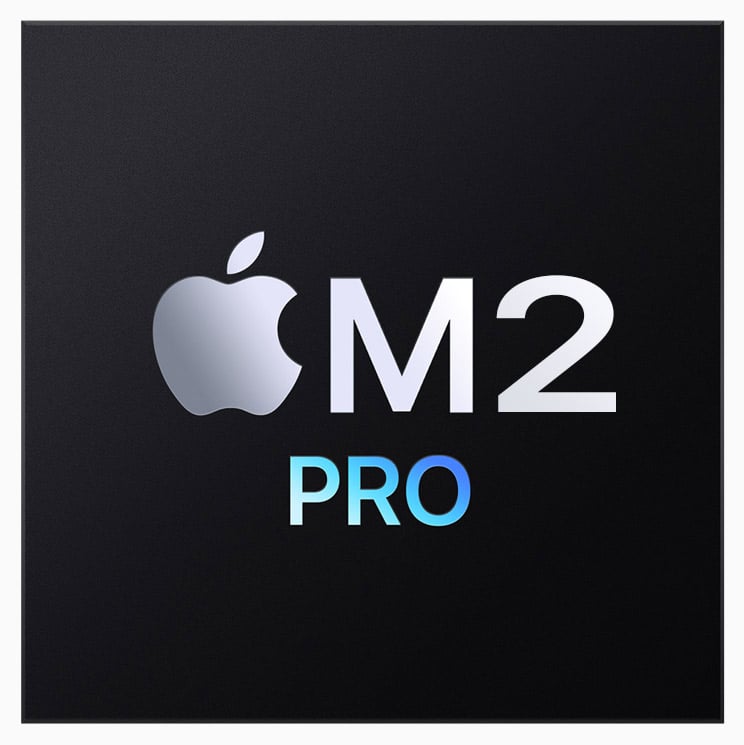
Apple M2 Pro with more CPU cores and production in 3 nm ?
Posted by Stefan on 2022-06-28
After Apple surprisingly presented the normal Apple M2 processor as the first successor to the Apple M1 already in June 2022, the Apple M2 Pro and the Apple M2 Max may follow in autumn. The difference in performance compared to the basic version could be even greater this time and range from 25 to 40 percent.
In this article we describe how Apple could realize this and why the price should also go up.
In this article we describe how Apple could realize this and why the price should also go up.
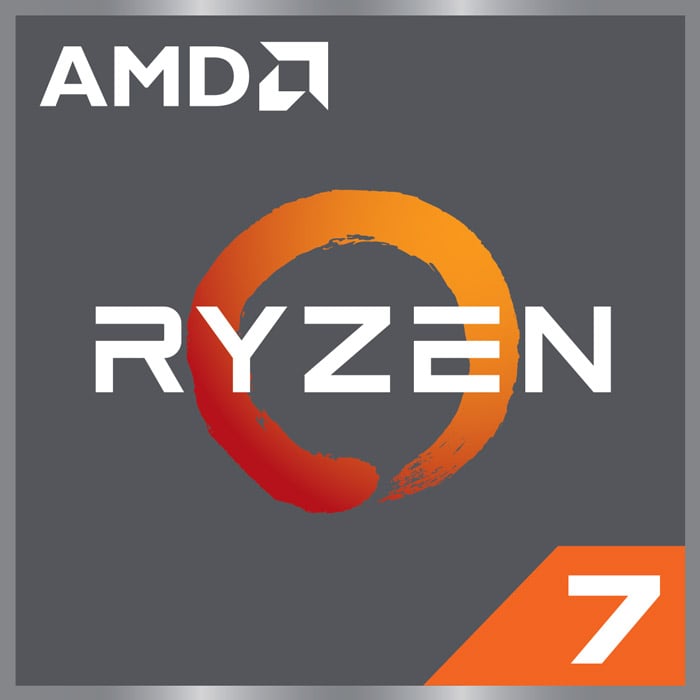
AMD Ryzen 5 7600X and AMD Ryzen 7 7800X are coming in September
Posted by Stefan on 2022-06-20
After we published a performance assessment of the AMD Ryzen 9 7950X last week, the well-known AMD leaker Greymon55 has now posted more informations via Twitter.
He predicts the first four models of the new Zen 4 desktop generation, which AMD would like to present at the end of 2022. There is also an alleged release date of September 15, 2022.
He predicts the first four models of the new Zen 4 desktop generation, which AMD would like to present at the end of 2022. There is also an alleged release date of September 15, 2022.
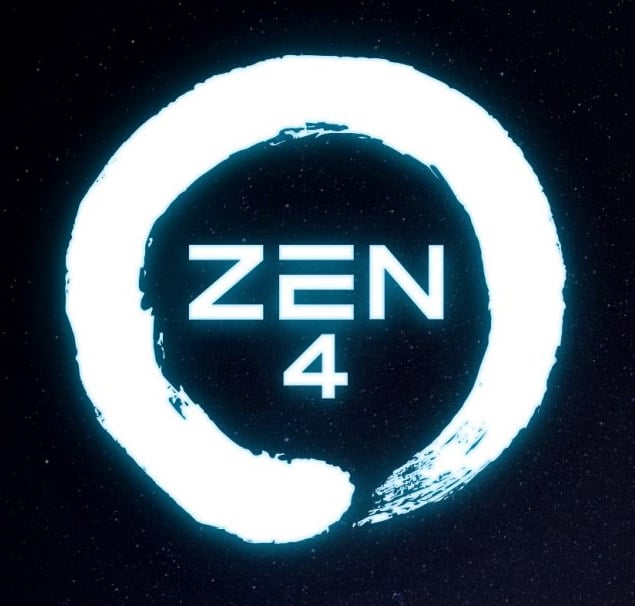
AMD Ryzen 9 7950X - Cinebench R23 Benchmark projection
Posted by Stefan on 2022-06-10
We give you a preview of AMD's new Zen 4 desktop processors and calculate the performance of the AMD Ryzen 9 7950X top model for the new AM5 socket. The performance data and other technical details come directly from the press kit that AMD released as part of its Financial Analyst Day on June 9, 2022.
Up to 15 percent more single-core performance and 35 percent more multi-core performance of the 16-core model are realistic !
Up to 15 percent more single-core performance and 35 percent more multi-core performance of the 16-core model are realistic !
Comparison of the two processors
The CPU comparison between the Apple M1 and the AMD Ryzen 9 5950x, of course, does not take place in a performance class. So the Apple M1 processor is designed with a TDP of 15 watts for notebooks, while the AMD Ryzen 9 5950x is a 16-core desktop processor with a TDP of 105 watts. Accordingly, the Apple M1 Mobilprocessor naturally also has no chance against the AMD Ryzen 9 5950x.Although: In einkern-load scenarios, the Apple M1 is still very good against the AMD Ryzen 9 5950X. There is a tender. Much greater is the difference in multi-core load scenarios. Here the AMD Ryzen reaches 9 5950x about a 4x as high performance as Apple's M1 processor.
Apple's M1 relies on a hybrid (Big.Little) core design, which has 4 performance cores and 4 efficiency nuclei. By this arrangement, the mobile processor is very energy saving, which also underpin the battery life of the MacBook Air (about 18 hours) as well as the MacBook Pro 13 (about 20 hours).
The AMD Ryzen 9 5950X is the most fastest AMD desktop processor for the socket AM4. He has 16 CPU cores and support simultaneous multi threading, which allows him to work up to 32 threads simultaneously. That makes him an absolute computing monster, which, of course, also play for professional applications, e.g. predestined in video editing or photo editing.
In addition, the AMD Ryzen 9 5950x can even not be overclocked because the processor has an open multiplier. But then a good to very good CPU cooling is required.
AMD is currently producing its processors in 7 nm, which is still significantly better compared to Intel. Apple, however, was able to secure the new 5 Nm technology of the chip manufacturer TSMC exclusively for its Apple A14 Bionic or Apple M1 processors. This makes them more efficient and more powerful.
Popular comparisons containing this CPUs
back to index







